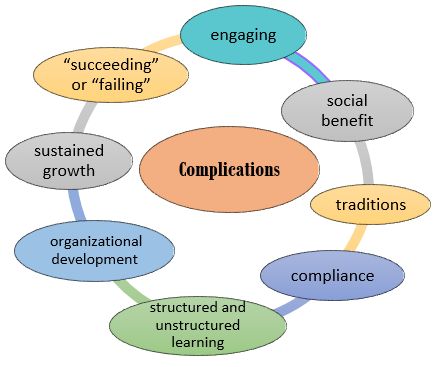Based on New School Venture Fund Blog by Stacey Childress and co-authors – Dissatisfied Yet Optimistic: Moving Faster Toward New School Models
http://www.newschools.org/blog/dissatisfied-yet-optimistic-moving-faster-toward-new-school-models (contains link to PDF copy of paper)
A Theory of Change: What it Will Take to Redesign Schooling over the
Next Decade
Everett Rogers developed an adoption curve to explain how new innovations
spread through a community. A few radical “innovators” (2.5% of
the total “market”) create the solutions, and a group of “early adopters”
take them up (13.5% of the total “market”).11

Everett Rogers Adoption Curve – from Dissatisfied Yet Optimistic
(from Page 18) Design talent/capacity. Most school teams engaged in this work require additional capacity to develop, build, assess, refine, and codify whole school models. This capacity takes two forms:
- • “experts” who provide a robust link between accumulated knowledge in critical disciplines and the work of designing and building schools – including learning scientists, technologists, design talent, architects, data scientists, and instructional specialists.
- • “builders” who do the heavy lifting of developing out all elements of the school design, from instructional curriculum and assessments, to staffing models, to cultural rituals, to technology backbones, and so much more that is vital but often invisible for breakthrough designs to yield results.
Without sufficient design capacity, we will see many great ideas but few that are translated into action in ways that yield replicable results.
The following excerpted from pages 15-16 of the same paper – we read this section as the marketing target and the steep operational/strategic challenge:
- • Students, families, and communities deeply engaged from the beginning. Students, their families and communities are the most important force for change. They need a few things to be true in order to engage. First, they need a clear and compelling vision of what school can be for their child; one that addresses their interests, aspirations and concerns. Then, they need a clear path to access and potentially shape that opportunity for their child – immediately. In short, they need a compelling reason to change what they are looking for in schools
And this statement as defining the performance measurement challenge:
New measures of broader outcomes. In order for young people to be fully prepared to create and pursue opportunities for long-term success, academic achievement alone is not enough. However, traditional measures of school success rely almost exclusively on student performance on standardized tests. To know whether innovative schools are succeeding along broader dimensions such as student agency, social-emotional learning, and executive function, we need valid, reliable, and agreed-upon measures. This will accelerate the innovation process, both by demonstrating which new designs and practices are most successful and more clearly demonstrating the limitations of the industrial model.
And if we seriously mean to personalize every child’s education in every community, we have some serious instructional planning work to do (that no technology solution will do for us):
Codified lessons. As innovators and early adopters do their work, they will generate significant insights that have the potential to benefit each other and future pioneers. These lessons will include insights about the substance of the new models, the design process, and the change management required to bring new models into being. Capturing and sharing these insights in actionable and accessible ways will be vital for practitioners, communities, and policy-makers to understand what is required for the change to take hold and spread.
A major support need – seriously – do we have this capacity now or do we need to build it if we expect to get any traction at all?
Human capital pipelines aligned to what new models will require from educators. This topic warrants a full paper in its own right, which we will not attempt to undertake here. However, we recognize the essential role of human capital efforts that prepare and develop educators so their skills and mindsets align with what new models will require (which is different from what the industrial model asked of teachers).
And take a look at the Invitation to Action that closes the paper and the resources and stories that follow.



